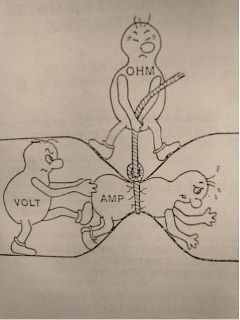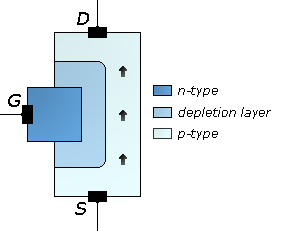Some more thoughts on the Random question part of lecture
I will put some additional thoughts here on a few of the random questions from lecture:
Friday Oct. 12:
Mayan Calendar and 2012.
I said everything I wanted to say about this in class. Sufficies to say that the physics that governs the reversal of the magnetic field is not predictable (as far as we know) and the Mayans didn't think the world will end this winter either. So i would recommend planning on having to explain your grades to your parents and not using theend of the world as an excuse to not do your work.
Wednesday Oct 10:
"Why do magnetic fields mess up pace makers"
There are several reasons that this can happen. Some of what Prof. McElroy said in lecture is correct but apparently (with a little bit of research) most modern pacemakers don't use B fields as resets etc. But still it has been found that magnets, some cell phones (when right against the pacemaker), and a few other things can intefer with pacemakers. This is for the more common reason that magnets chan effect currents. As we'll learn in class a current feels a force when it's in a magnetic field. And later in the semester we will learn that changing magnetic fields can produce forces that make currents. So changing magnetic fields can effect any electrical device and the sensitive pacemaker is one of these.
So rules have been put in place that are very, very safe to ensure pacemaker safety. Prof McElroy has 10 T magnets in his lab and we have a line drawn at the distance that a person with a pacemaker should be careful (it's actually several times further than actual danger). In addition there are new pacemaker designs that have been shown to be safe for many magnetic fields (including MRIs). So engineers are on top of this.
Monday Oct 8th .
"Amplifiers: How do they work."
Amplifiers essentially make some input bigger at the output. This can be used to make a power signal larger so you can draw more current through a resistor or, more commonly, to take a small signal, like the one from that sattelite sending GPS signals to earth, larger so your cell phone can make the faint signal out.
Almost all amplifiers operate on a very basic principle that if you can modify the resistance of a resistor with only a little input signal then the change in current through it may be very large. The below picture is a representation of Ohm's law. It is a silly cartoon but it has in it a key part of most amplifiers.

In the cartoon the voltage (potential) is pushing the current (amperes) through a wire and Ohm is making this difficult (providing resistance). Amplifiers, from tubes to transistors, use clever tricks of materials or geometry to make it so that with only a small signal the ammount that Ohm is resitricting the current can be varied. Then by raising the voltage you can have an even bigger change in current from the same signal.
Below is a diagram of something called a "field effect transistor". To use one of these we apply a voltage across it with the positive voltage at S and a lower one (like zero) at D. By putting a tiny voltage on G the area that the current can flow from S to D is made smaller. This makes the current drop and we can use this change to make a larger voltage (the details of how to do this can get a little tricky). Most amplifiers work in a very similar way.
